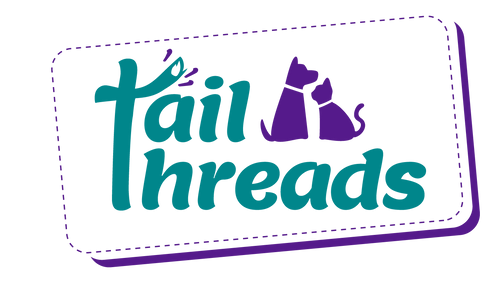The Vizsla is a sporting dog breed that has a rich history dating back to the 10th century. The breed originated in Hungary, where it was developed to be a versatile hunting dog capable of tracking, pointing, and retrieving game. Today, the Vizsla is known for its friendly and affectionate personality, as well as its athleticism and intelligence. This article will provide an overview of the Vizsla's breed characteristics, appearance, personality, habits, training and nutrition advice, healthcare, grooming, advantages, disadvantages, and curious facts.
Vizsla's Breed Characteristics
- Origin: Hungary
- Size: Medium
- Weight: 44-60 pounds
- Lifespan: 10-14 years
- Breed group: Sporting
- Activity level: High
- Barking level: Low
- Attitude to other dogs: Friendly
- Attitude to cats: Not recommended
- Attitude to kids: Great with children
Vizsla's Appearance
The Vizsla has a distinctive golden rust coat that is short, smooth, and dense. Its eyes are a striking shade of amber, and its nose and nails are also a reddish-brown color. The Vizsla's body is muscular and athletic, with a deep chest, long neck, and sloping shoulders. Its tail is docked to a third of its original length. The breed stands at around 21-24 inches tall at the shoulder.
Vizsla's nature
The Vizsla is known for its friendly and affectionate nature. It is loyal to its family and thrives on human interaction. The breed is also intelligent, curious, and energetic, making it an excellent companion for active owners who enjoy hiking, running, or other outdoor activities. Vizslas are great with children and other dogs, but their high prey drive makes them less suitable for homes with cats or other small animals.
Vizsla's Habits
The Vizsla is an active breed that requires daily exercise to keep it healthy and happy. It enjoys spending time outdoors and needs plenty of mental stimulation to prevent boredom. Vizslas are also known for their love of water and enjoy swimming and playing in lakes and rivers. The breed is generally easy to train, but it does have a strong prey drive that can make it difficult to train off-leash.
Training and Menu Advice for Vizsla Owners
Vizslas are active dogs that require a balanced diet to support their energy levels. They thrive on high-quality dog food that is rich in protein and healthy fats. Owners should also ensure that their Vizsla has access to plenty of clean water throughout the day. When it comes to training, Vizslas are eager to please and respond well to positive reinforcement techniques. Consistent training and socialization are crucial to prevent problem behaviors.
Healthcare for Vizslas
Vizslas are generally healthy dogs, but like all breeds, they are prone to certain health issues. Some of the most common health problems in Vizslas include hip dysplasia, allergies, and certain cancers. Regular vet checkups, vaccinations, and preventative care can help keep Vizslas healthy and happy. Owners should also maintain good dental hygiene by brushing their Vizsla's teeth regularly and washing their ears to prevent infections
Vizsla's Grooming
Vizslas have a short, sleek coat that is easy to maintain. They shed seasonally, so during those times, they will require more frequent brushing. Weekly brushing can help reduce shedding and keep their coat shiny and healthy. Bathing should be done only as needed, as frequent bathing can strip the natural oils from their coat and cause skin irritation.
Vizsla's nails should be trimmed regularly to prevent them from becoming too long and causing discomfort or injury. They should also have their teeth brushed regularly to maintain good dental health. Ears should be checked and cleaned as needed to prevent infection.
The Advantages of Vizslas
- Vizslas make great companions for active individuals or families who enjoy outdoor activities. They are affectionate and loyal, and love to be around people. Their intelligence and eagerness to please make them easy to train and excel in various sports and activities.
- Vizslas are generally healthy and have a lifespan of 10-14 years. They require moderate exercise and can adapt well to various living situations, including apartments, as long as they receive enough physical activity and mental stimulation.
The Disadvantages of Vizslas
- While Vizslas are generally healthy, they may be prone to certain health issues, such as hip dysplasia and cancer. They also require a lot of attention and exercise, so they may not be suitable for individuals or families who cannot commit to providing enough physical activity and mental stimulation.
- Vizslas may also exhibit separation anxiety if left alone for extended periods, so they are not ideal for people who work long hours or travel frequently.
Engaging Facts about Vizslas
- Vizslas are known for their excellent sense of smell and were originally bred to hunt and track game.
- Vizslas are also known as "velcro dogs" because of their strong attachment to their owners.
- The Vizsla was nearly extinct after World War II, but was saved by breeders who worked to rebuild the population.
- Vizslas have a distinctive golden rust coat that is sometimes referred to as "red gold."
In summary, Vizslas are affectionate, loyal, and intelligent dogs that make great companions for active individuals or families. They require moderate exercise and mental stimulation, and are generally healthy with a lifespan of 10-14 years. However, they may not be suitable for individuals or families who cannot commit to providing enough physical activity and attention, and may be prone to certain health issues. Overall, if you are an active and devoted pet owner, a Vizsla could be an excellent addition to your family.

